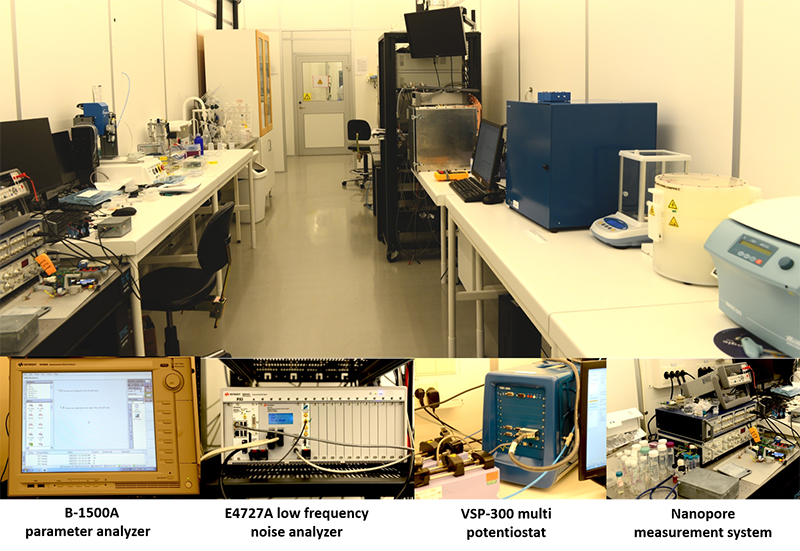Projects
Sensors for biotechnology
The heterogeneity within cellular or molecular populations of a single type can be crucial for their function and behaviour, e.g. how efficiently immune cells clear infections, if a bacterium can be eliminated by an antibiotic, or how drug-target molecules interact. Studying these heterogeneities, as opposed to bulk behaviour, is of clear scientific importance for our understanding of living bio-systems. Such studies can also facilitate the development of new drugs and new treatments to disease. However, our understanding of cellular and molecular heterogeneity is still very limited. For cells, this limitation is mainly due to the lack of tools to profile the dynamic functional processes occurring in individual cells. The gold standard methods to profile dynamic functional processes of cells, via monitoring metabolism-induced extracellular pH changes, are restricted to analysis of at least 10,000 cells. For protein molecules, most of the existing methods to trap single molecules to study molecular heterogeneity rely on applying external forces or immobilizing the analyte molecule. They are therefore highly invasive and can influence the behaviour of interest.
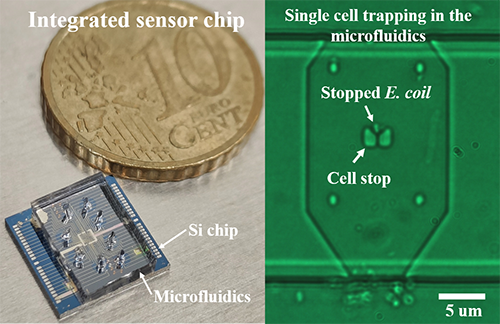
We are exploring new sensor device concepts based on advanced silicon nanofabrication technology for investigating cellular and molecular heterogeneities. Our research spans from design and realisation of silicon nanodevices with sub-10 nm resolution, fundamental solid-liquid interfacial mechanisms that are responsible for sensor signal, noise and stability, microfluidics integration for high-throughput single cell collection and controlled single cell release, to novel device structures for noninvasive single molecule trapping and analysis. The success of these explorations could potentially lead to novel biomedical applications of significant societal importance, such as rapid antibiotic susceptibility tests, new diagnostic tools and treatment options for severe infectious diseases, and novel methods for screening new drugs.
Memristors for energy-efficient neuromorphic computing
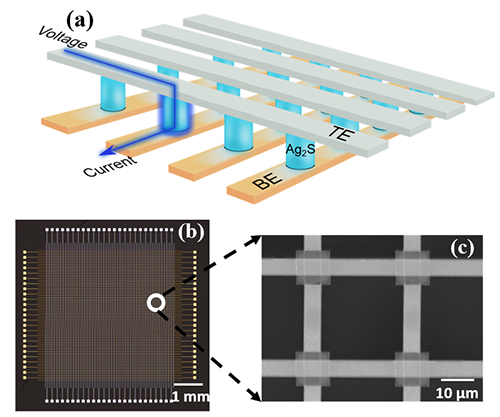
To handle an exponentially growing amount of data in our modern society, the ICT sector (including data centers) will generate rapidly increasing energy demand and carbon emissions. This poses a main challenge to both the economic viability and environmental sustainability. Today’s computing devices with the conventional Von Neumann architecture have separate storage (memory) and computing (processing) units. The frequent data shuttling between storage and processing units inevitably causes severe time latency and limits the energy efficiency of the ICT sector. In-memory (neuromorphic) computing, which enables storing and processing data within artificial synaptic devices, holds great promise to address the problem. A two-terminal memristor is a promising candidate as a synaptic device for in-memory computing, due to its ability to emulate the weight update process of a biological synapse through resistance-switching induced by its terminal voltages.
We are currently exploring wafers-scale integration of Ag2S based memristive cross-bar array using a fully CMOS compatible process. Our aim is to realize a new resistance-switching mechanism in the memristor to significantly reduce the cycle-to-cycle and device-to-device variabilities of the integrated memristors, as well as the energy inputs required for the device operation. If successful, the project outcome will provide a promising hardware solution for future reliable and energy-efficient neuromorphic computing.
Established device platforms
Nanowire sensors

Nanopore and nanopore array sensors

Nanopore gated sub-attoliter silicon nanocavity for single molecule trapping and analysis
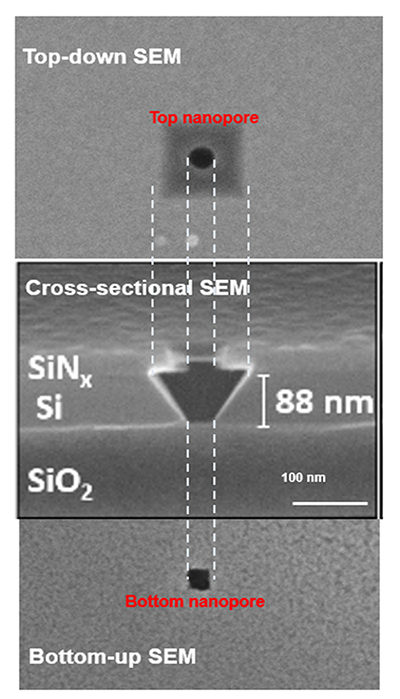
Nano-needles
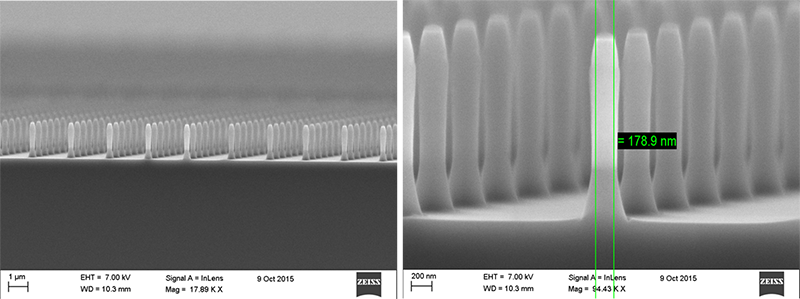
Our sensor characterisaton lab
